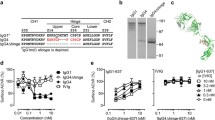Summary
3,4-Diaminopyridine (3,4-DAP), a potent potentiator of action potential evoked release of acetylcholine from presynaptic terminals in the neuromuscular junction was given i.v. and p.o. to two patients with myasthenia gravis. Effects were monitored electrophysiologically by repetitive nerve stimulation and by standardized clinical testing.
Administration of 8 mg and 9 mg 3,4-DAP i.v. produced a clear improvement in the neuromuscular transmission after approximately 20 min.
When 3,4-DAP was given p.o. 24 mg was shown to be effective. At a dosage of 18–24 mg p.o. 3,4-DAP significantly potentiated the effect of the cholinesterase inhibitor pyridostigmine at an optimal dose. The maximal effect of 3,4-DAP p.o. was obtained after 2.5–3 h.
No significant CNS side-effects were found which is in contrast to those reported for 4-aminopyridine.
The results suggest that 3,4-DAP may be useful as an addition to the conventional treatment with cholinesterase inhibitors when immunosuppressive treatment is considered contraindicated or when it has not yet reached its full effect.
Similar content being viewed by others
References
Cull-Candy SG, Miledi R, Trautmann A (1979) End-plate currents and acetylcholine noise at normal and myasthenic human end-plates. J Physiol 287:247–265
Cull-Candy SG, Miledi R, Trautmann A, Uchitel OD (1980) On the release of transmitter at normal, myasthenia gravis and myasthenic syndrome affected human end-plates. J Physiol 299:621–638
Grob D (1979) Myasthenia gravis. Ann NY Acad Sci 274
Hannerz J (1974) Discharge properties of motor units in relation to recruitment order in voluntary contraction. Acta Physiol Scand 91:374–384
Kim YI, Goldner MM, Sanders DB (1980) Facilitatory effects of 4-aminopyridine on neuromuscular transmission in disease states. Muscle Nerve 3:112–119
Lechat P, Deysson G, Lemeignan M, Adolphe M (1968) Toxicité aigue composée de quelques aminopyridines in vivo (Douris) et in vitro (cultures cellulaires). Ann Pharm Fr 26:345–349
Lundh H (1978) Effects of 4-aminopyridine on neuromuscular transmission. Brain Res 153:307–318
Lundh H, Leander S, Thesleff S (1977a) Antagonism of the paralysis produced by botulinum toxin in the rat. J Neurol Sci 32:29–43
Lundh H, Nilsson O, Rosén I (19776) 4-Aminopyridine — a new drug tested in the treatment of Eaton-Lambert syndrome. J Neurol Neurosurg Psychiatry 40:1109–1112
Lundh H, Nilsson O, Rosén I (1979) Effects of 4-aminopyridine in myasthenia gravis. J Neurol Neurosurg Psychiatry 42:171–175
Lundh H, Nilsson O, Rosén I (1983) Novel drug of choice in Eaton-Lambert syndrome. J Neurol Neurosurg Psychiatry 46:684–687
Lundh H, Nilsson O, Rosén I (1984) Treatment of Eaton-Lambert syndrome: 3,4-diaminopyridine and pyridostigmine. Neurology, in press
Matell G (1967) Myasthenia gravis. Treatment of myasthenia gravis. Opusc Med 12:99–109
Miller RD, Booji LHDJ, Agoston S, Crul JF (1979) 4-Aminopyridine potentiates neostigmine and pyridostigmine in man. Anesthesiology 50:416–420
Molgo J, Lundh H, Thesleff S (1980) Potency of 3,4-diaminopyridine and 4-aminopyridine on mammalian neuromuscular transmission and the effect of pH changes. Eur J Pharmacol 61:25–34
Sanders DB, Kim YI, Howard JF Jr, Goetsch CA (1980) Eaton-Lambert syndrome: a clinical and electrophysiological study of a patient treated with 4-aminopyridine. J Neurol Neurosurg Psychiatry 43:978–985
Author information
Authors and Affiliations
Additional information
Supported by the Swedish Medial Research Council, Stockholm (project no. B84-04X-00084-20C) to the Department of Clinical Neurophysiology
Rights and permissions
About this article
Cite this article
Lundh, H., Nilsson, O. & Rosén, I. Improvement in Neuromuscular transmission in Myasthenia Gravis by 3,4-Diaminopyridine. Eur Arch Psychiatr Neurol Sci 234, 374–377 (1985). https://doi.org/10.1007/BF00386054
Received:
Issue Date:
DOI: https://doi.org/10.1007/BF00386054




